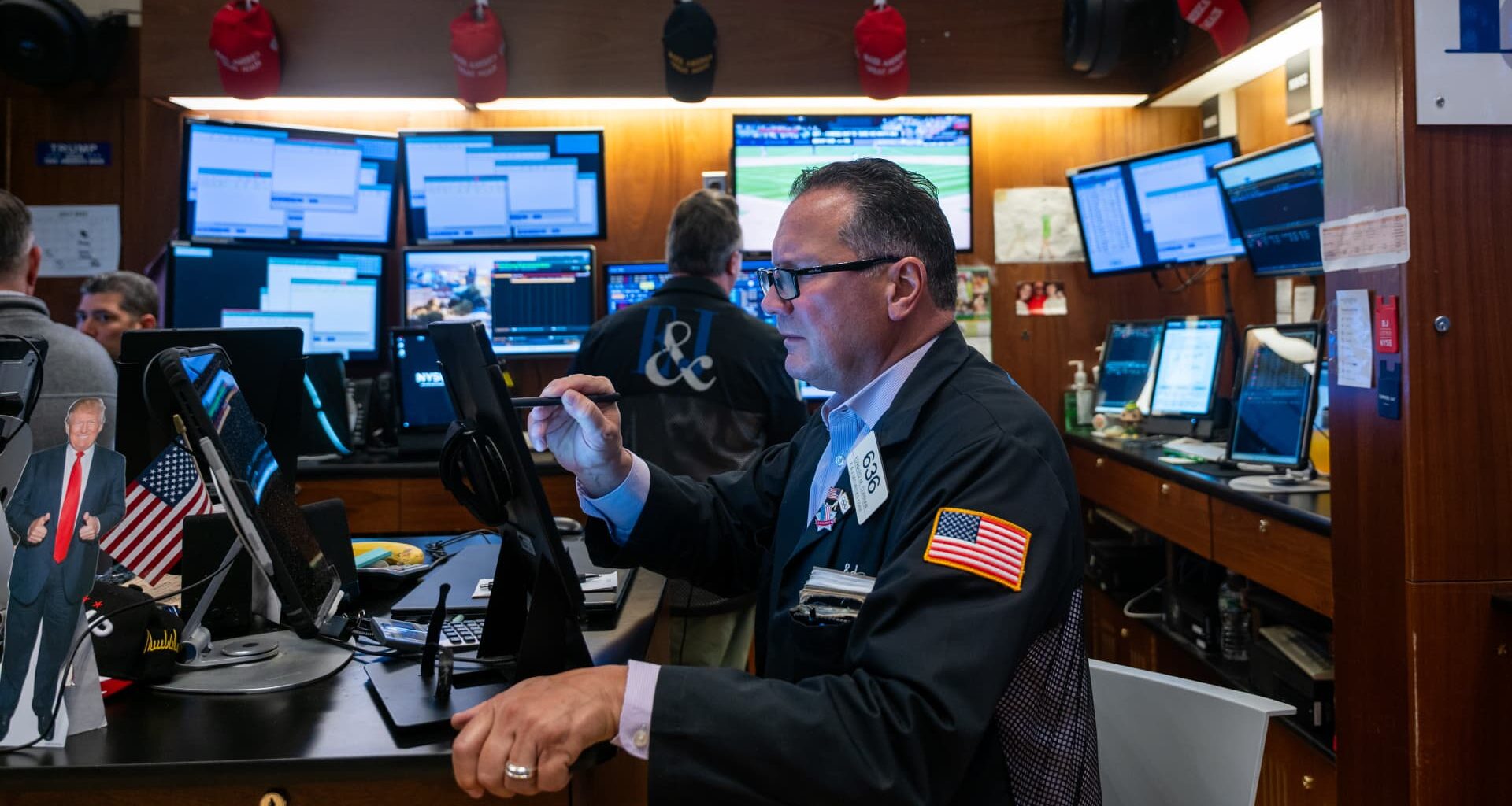Traders work on the floor of the New York Stock Exchange on July 23, 2025 in New York City.
Spencer Platt | Getty Images
The S&P 500 fell on Tuesday on the heels of some mixed corporate earnings, as Wall Street awaits the Federal Reserve’s interest rate decision and a slew of economic data.
The broad market index lost 0.2% after hitting a fresh record-high at the opening bell. The Nasdaq Composite slipped 0.1% after also hitting a record early in the session, while the Dow Jones Industrial Average fell 233 points, or 0.5%.
Investors trimmed some bets on risk assets after stocks came roaring back in recent months from their April lows, helped by progress in trade talks between the U.S., Japan and the European Union. Talks with China have been less certain, with U.S. negotiators ending negotiations with their Beijing counterparts on Tuesday, while a potential extension of a pause on higher China tariffs remained up in the air. Negotiators also said that a potential extension of the pause won’t be final until President Donald Trump signs off.
Traders evaluated some mixed results on Tuesday. Shares of Boeing were lower even after a solid earnings print as the company delivered the most airplanes since 2018. Procter & Gamble stock inched lower despite a better-than-expected full-year revenue forecast and the naming of an insider as CEO.
Other corporate results have missed the mark, with shipping giant and consumer bellwether UPS posting an earnings shortfall and not issuing guidance. Whirlpool missed second-quarter analyst estimates and slashed its dividend.
This week is a key stretch for corporate earnings, with “Magnificent Seven” names Meta Platforms, Microsoft, Apple and Amazon all set to report results on Wednesday and Thursday. As it stands, 170 S&P 500 companies have reported their quarterly results, and more than 83% have beaten expectations, according to FactSet data.
The looming Federal Reserve interest rate decision on Wednesday also weighed on equities. The central bank is largely expected to keep its benchmark unchanged at a range of 4.25% to 4.5%. Investors will also parse a slew of economic data this week, including a reading of gross domestic product and private payroll data due out Wednesday. Wall Street will cap off the data-heavy week with the key July jobs report on Friday.
“The market has had a strong run and is now in digestion mode. Some technical indicators suggest a pullback may be coming,” said Jay Woods, chief global strategist at Freedom Capital Markets. “This is a pause, a period to focus on individual names driven by earnings, while the broader market watches how the Fed’s narrative evolves.”
“Hopefully, we’ll get some clarity after Wednesday’s press conference,” he added.
While investors looked past the U.S.-EU trade deal, they will be watching for any other potential deals between the U.S. and other countries, such as China, to be announced by Friday’s tariff deadline. Top U.S. and Chinese officials met in Stockholm Monday for another round of trade talks. Tariffs and inflation will remain a focal point throughout the week in other areas as well.
July’s nonfarm payrolls on Friday will be a key event for traders. Economists polled by Dow Jones expect the report to show 100,000 jobs added in July, less than the 147,000 added in June. The unemployment rate is anticipated to rise slightly to 4.2% from 4.1%.
